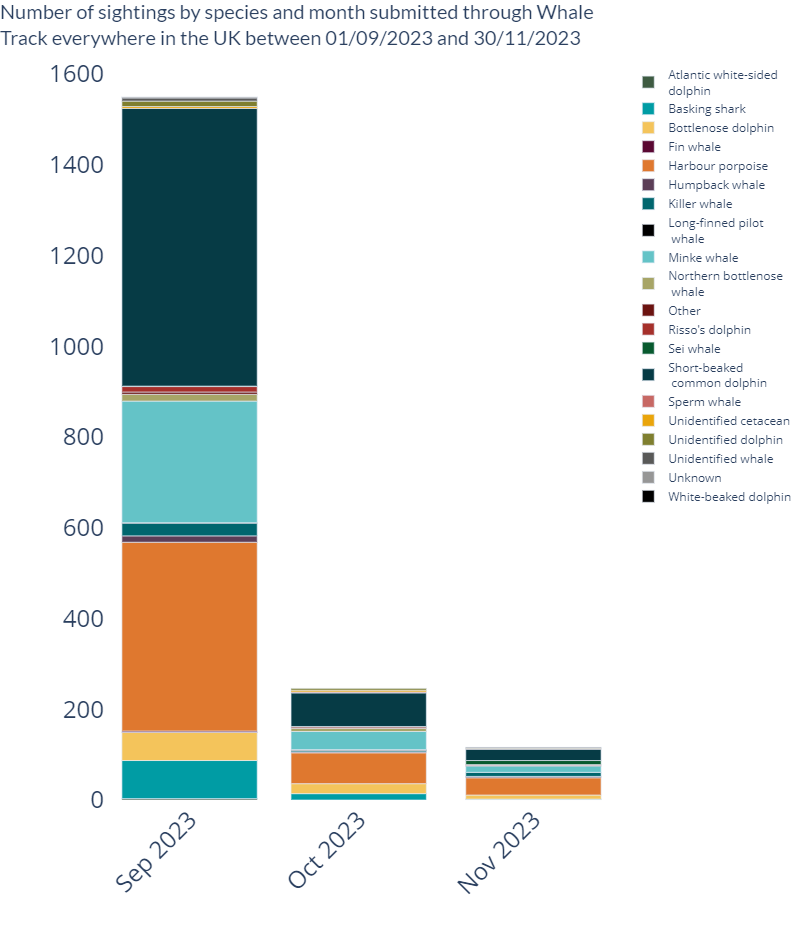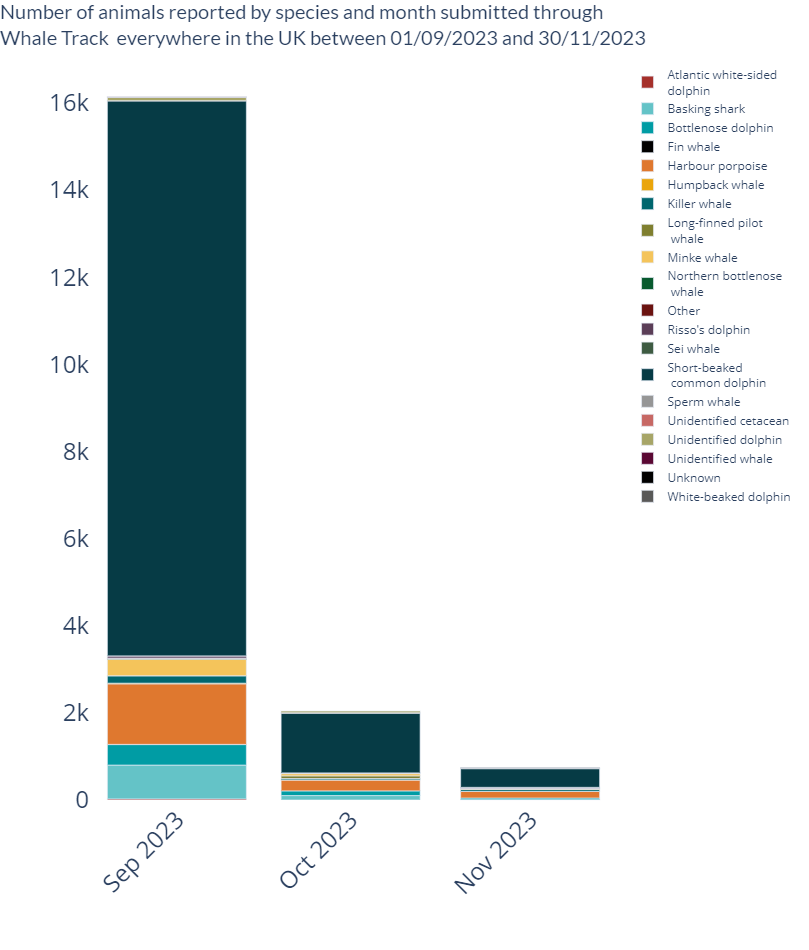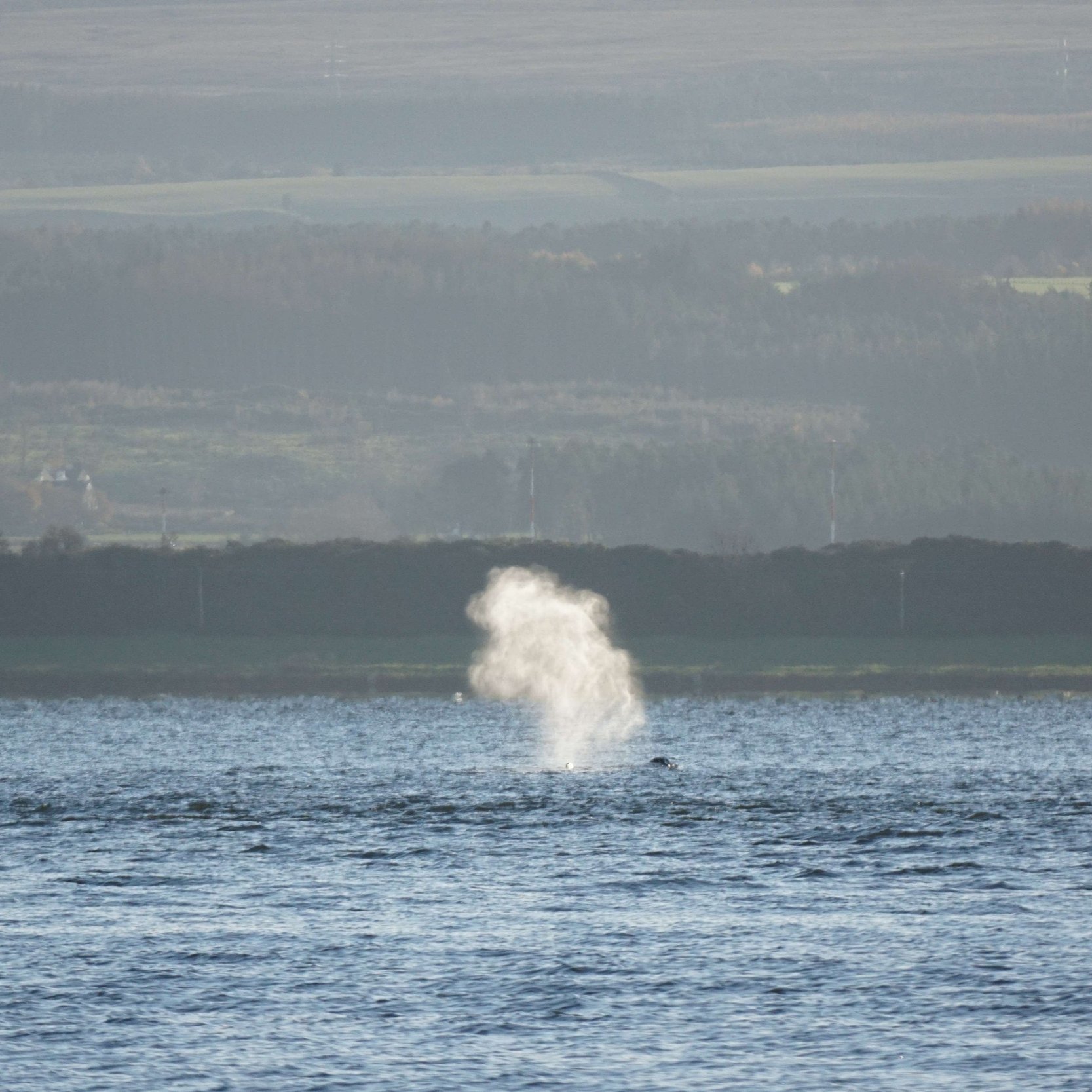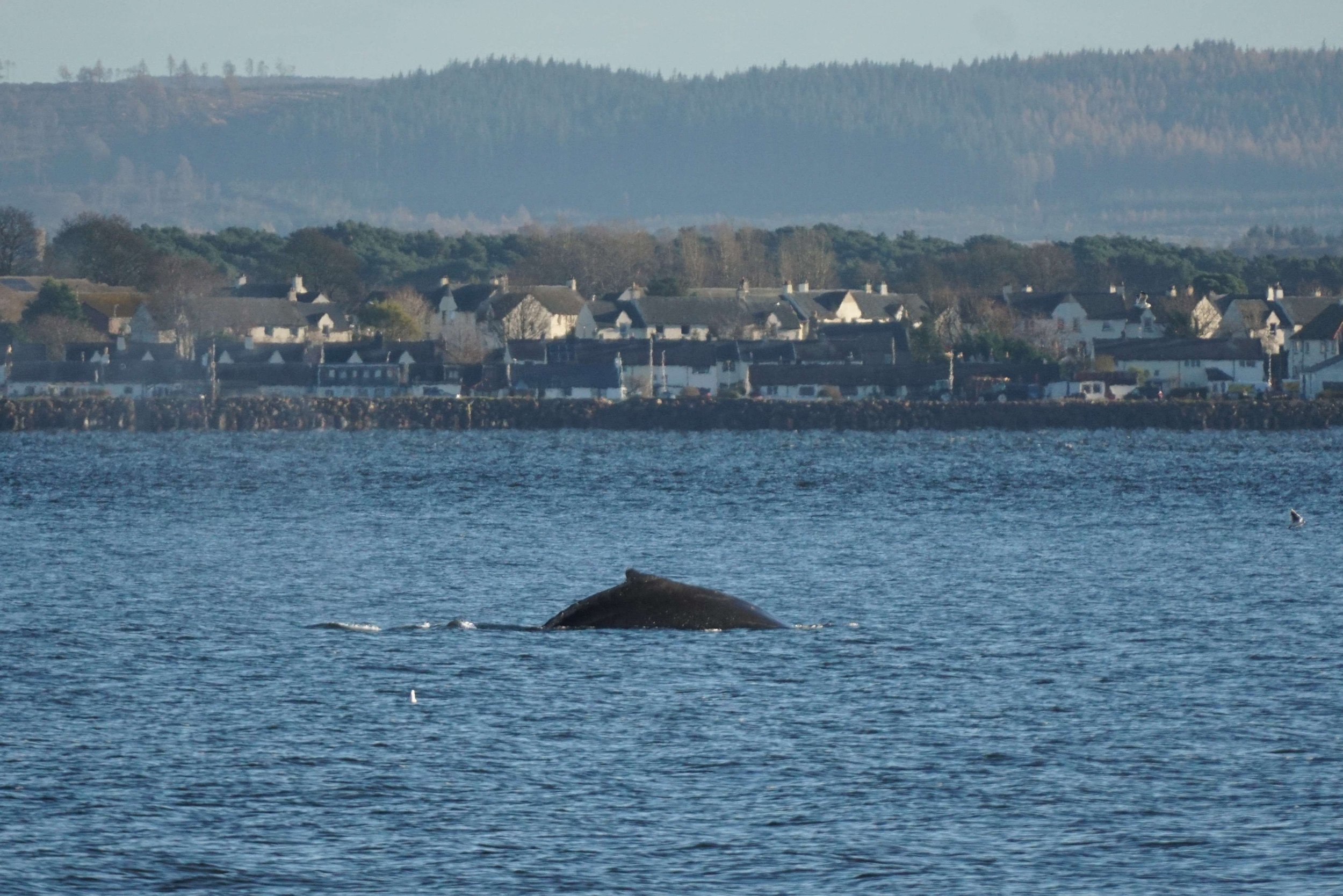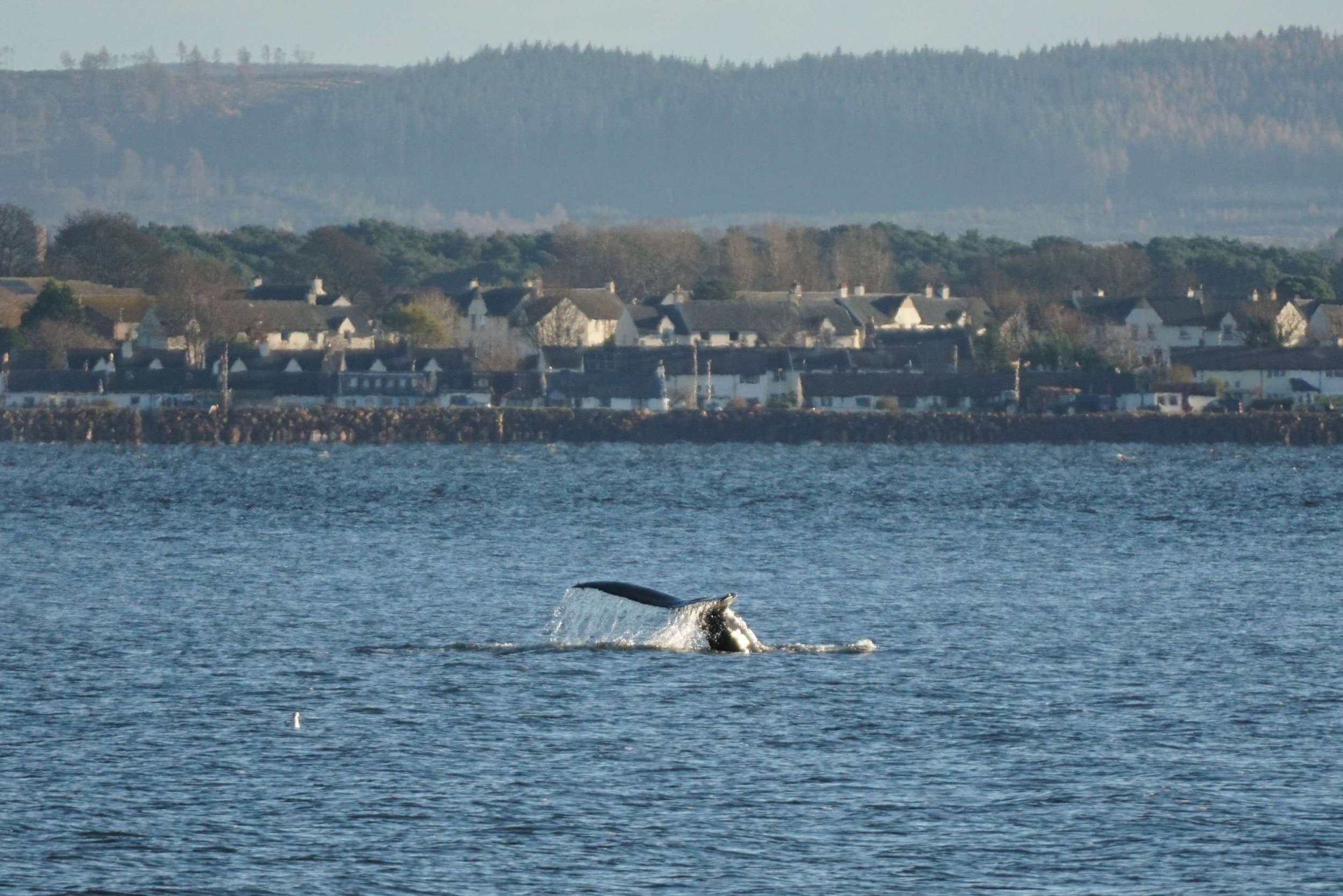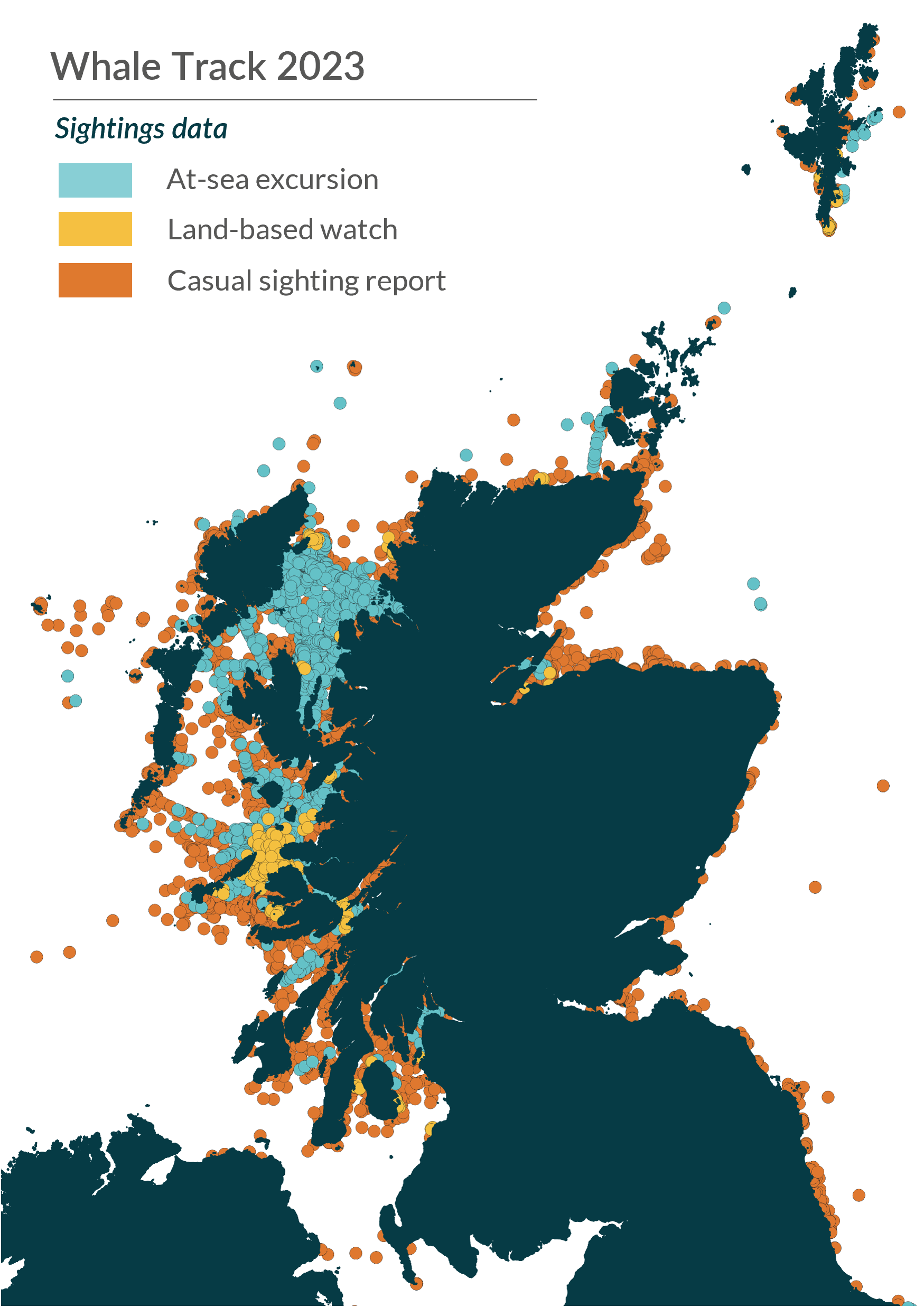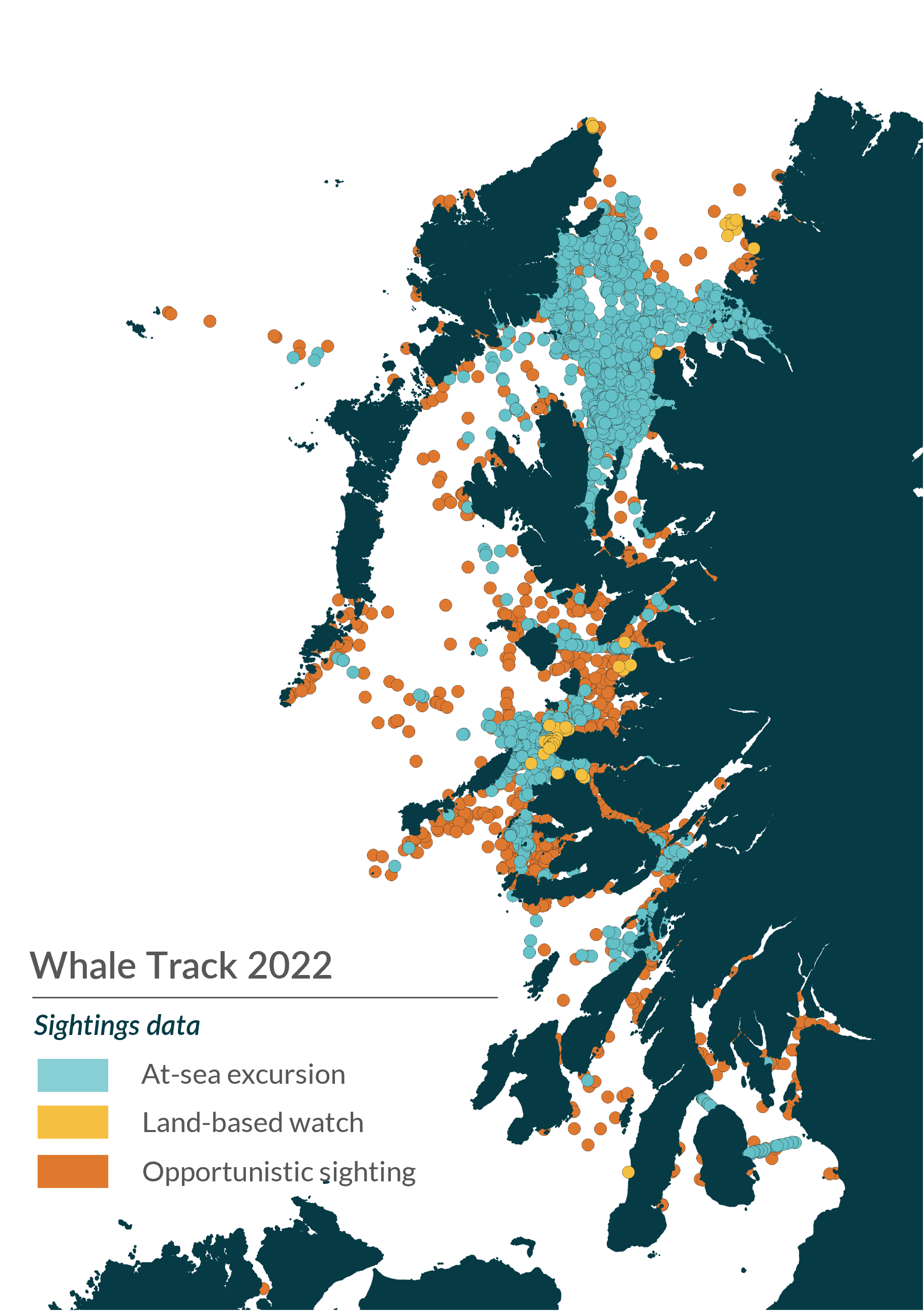A Jam Packed Autumn for Sightings: Whale Track Summary
©Zoltan Around the Globe
With the nights drawing in and the frost settling on the ground, winter is well and truly upon us, below Sadie, our Education Officer, takes a dive into a jam-packed autumn of sightings.
Autumn and winter are always the time of year when reports of whales, dolphins and porpoises start to slow down. With the night’s drawing in and the weather conditions deteriorating, it’s understandable that there are less eyes on the sea. However, compared to autumn 2022, we’ve seen a fantastic 80% increase in the number of reporters and 52% more sightings - with 312 people reporting 1,917 sightings of 18,934 animals from 15 species!
“We’d like to say a massive THANK YOU to our dedicated and hardy Whale Track community for continuing to monitor our seas and build our understanding of the cetaceans in our waters throughout the year.”
Our final podium for 2023 will come as no surprise if you’ve been following the previous sighting summary reports. What may come as a surprise, is that for the first time this year, basking sharks claimed fourth place in the number of of sightings of this massive fish reported: 101 sightings of 883 animals. Minke whales continue to hold onto third place, with 322 sightings of 449 animals, while the harbour porpoise - which only marginally came second in the summer sightings podium - has claimed second once again, with 522 sightings of 1,789 animals. It was the common dolphin a clear winner during the autumn months, with 712 sightings of 14,539 animals!
*This data has not been analysed or corrected for effort.
Minke matching
Although slightly outside of the autumn sighting summary months, I couldn’t write this update without including this fantastic sighting from Jock from SkyeXplorer.
During one of their trips in mid-August, they came across a feeding frenzy, approx. 1 mile east of Staffin, with many dolphins, birds and a few different minke whales, one with a very distinctive fin.
On seeing the whale, Jock gained permission from the photographer, Valentine des Mazery, to share their image with HWDT to see if we could find a match. With such a distinctive fin, our Science Manager Lauren, was soon able to identify the individual as being FD47, Chunky.
Chunky has been recorded on the west coast of Scotland in 2008, 2011, 2018 and now 2023. This represents a good case study to demonstrate that there can be numerous years between reports of individual whales - with Chunky last reported 5 years ago. However, Chunky may be returning to the waters around Skye each year but it just wasn’t photographed, so we just don’t have a record.
With the launch of our new Minke Whale Photo ID Catalogue, everyone can get involved, by sending in your minke whale photographs and seeing if you can find a match. The more photographs and sightings data we gather, the more accurately we can understand the lives of Chunky and other minke whales and demonstrate how important Hebridean waters are for these creatures.
©Valentine des Mazery
killer whales
There’s been a few standout sightings of killer whales this autumn. A charismatic species, which tops many people’s bucket list of creatures to see, it’s always exciting to see reports of these magnificent animals.
Tanya Gray has been conducting watches from land in Shetland throughout August and September and her efforts on 30 September certainly paid off. Throughout her watch which lasted almost 2 hours (fantastic effort Tanya!), she spotted a pod of 8 killer whales off Sandwich. In the area for over an hour, this pod was made up of adults, juveniles and calves, milling about until they started showing feeding behaviours.
Killer whales taken during a casual sighting in September ©Tanya Gray
Another incredible killer whale sighting, which made a lot of peoples jaw drop, came from Jamie MacAlister who reported seeing 20 killer whales feeding from the nets of a pelagic trawler off the skerries on the east coast of Shetland in October. Stunning footage was shared on the Shetland Orca Sightings Facebook Page by John Lowrie Irvine, which shows a truly memorable and rare sight of this large pod swimming alongside the boat, displaying foraging behaviours along with a couple of tail slaps and even a spy hop!
Meanwhile, the boys, John Coe and Aquarius, were seen every month throughout autumn, with sightings of the pair in the Minch, north Mull and Ardnamurchan, north Skye and this fab encounter by Uist Sea Tours.
sperm whale
It’s not often we get sightings of sperm whales in Scotland and when we do it’s usually mature males, so when a report came in of a juvenile sperm whale off Skye back in October our interest was piqued. Katie Tunn, the BDMLR co-ordinator for the area and SMASS volunteer, was tasked with monitoring the young whale and was able to confirm the species from video footage.
Sperm whales are a deep diving species, capable of diving to depths of 2000m, holding their breath for up to 2 hours. Calves usually stay with their mothers for several years.
Sadly, the outcome for this youngster was not a good one. The juvenile sperm whale was initially reported in shallow waters near Dunvegan, on the northwest of Skye. With its proximity to shore and having already stranded and managed to re-float itself once, Katie Tunn co-ordinated BDMLR’s efforts. Unfortunately, due to its poor condition, no adult in sight and behaviour indicative of a likely re-stranding, there was not much to be done, other than monitoring the whale.
After 10 days of monitoring, day and night, the young sperm whale passed away. The Scottish Marine Animal Stranding Scheme (SMASS) took the body for a necropsy to try to discover what may have caused it to come ashore.
Read BDMLRs report of the sperm whale stranding: Sperm whale stranding - British Divers Marine Life Rescue (bdmlr.org.uk)
Keep an eye out for our winter webinar line up where Katie will be talking all things BDMLR and SMASS.
WHALES IN THE BIG CITY
There have been some exciting whale sightings reported off the coasts of big cities as we reached the end of November and these sightings have continued into December. In Inverness, Zoltan Around the Globe spots a humpback whale, while watching from Chanonry Point.
©Zoltan Around the Globe
Meanwhile in Edinburgh, not one but two big whales have been sighted in the Firth of Forth. First reported in mid-November, by multiple reporters, a sei whale has continued to be seen in recent weeks. But even more exciting for everyone watching, a lucky few that braved the cold, were treated to a rare sight of both a sei and humpback whale in close proximity.
Gordie Bryce captured some fantastic shots of the sei whale showing the identifiable sinking behaviour, which helps distinguish the animal from other similar looking species.
sightings map: january - november 2023
As we reach the end of the year, we wanted to share the immense effort you have all put into reporting your sightings during 2023. We are blown away by everyone’s effort this year and nothing shows it more clearly than the sightings map below.
The map on the left shows sightings reported to us from excursion mode, watches from land and casual reports between January and November this year. The map on the right shows all the sightings reported from 2022. Since the removal of the boundary on Whale Track, sighting reports across Scotland have been increasing and this year we had to extend the sightings map to show all of Scotland due the sheer number of reports we are now receiving.
Not only are there sightings reports on almost every coastline across Scotland, including Orkney and Shetland, but the increase in reports coming in from the west coast is such that some of those blank areas from 2022 have been filled this year, with very little Hebridean Sea still visible. There have also been much larger number of sightings now coming in from around the Kintyre Peninsula, Arran and the Clyde, and the number of land-based watches has trebled in number since 2022. Thank you to every single person who has submitted a sighting report this year.
If you think you could help fill in even more of the gaps in the map, by reporting your sightings, download Whale Track today and join a community of people deepening our understanding of the whales, dolphins, porpoises and basking sharks found off our coasts
winter watching challenge - #emraceyourwhaledside
Although reports this autumn have increased, we are eager to continue the momentum into the winter months. The more data we can collect throughout the year, the more of an understanding we’ll have of the presence and absence of species in our seas year-round.
As you can see from the graph above, the number of reports greatly reduce throughout the winter months, which is understandable as there are fewer species in our seas during this period. However, there are also less people on, and watching, the water. So, this winter, we are challenging everyone to don their raincoats and woolly hats and do an effort-based watch from land, even a 30-minute watch can provide vital data for an area. Or why not record your next ferry trip as an excursion?
Check out our recent blog on the wonders of winter watching and take part in our #EmbraceYourWhaledSide challenge.
Share your winter watch photographs with us and inspire others to do the same by tagging #EmbraceYourWhaledSide and @HWDT on Facebook or @HWDT_org on Instagram.


